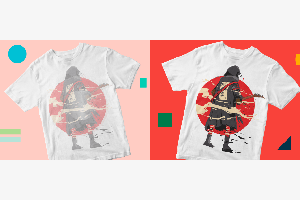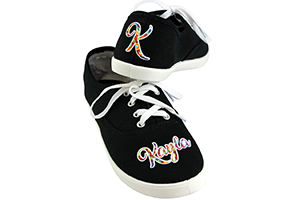June 5, 2017
Diversification is fast becoming the “power word” of the industry. It used to be that your business was identified by its specialty — screen printing, embroidery, transfers, engraving, etc. But the new reality is that many shops are losing revenue opportunities because they can’t handle all their clients’ needs, which may include apparel, signage, awards, promotional products and more.
Today’s customers are looking for one-stop shops to accommodate most or all their needs. Let’s say you have an opportunity take on a 5K run as a client. Chances are you will be printing T-shirts for staff, participants and onlookers. But such an event offers opportunities beyond apparel, including awards, signage, promotional products and gifts — none of which lend themselves to screen printing. If you can’t deliver on all of it, you may not get the business at all.
Diversifying your business doesn’t mean adding every decoration process. Instead, evaluate your strengths and weaknesses, then do an in-depth assessment of buying trends. What products do your customers want that you can’t deliver? How often do they order? What are the expected turnaround times and preferred quantities?
Several years of a weak economy have altered consumer and business spending habits. For example, many screen-printing shops have seen clients divide one large job into several small ones spread over several months. A 12-dozen-shirt order is fine in terms of screen-printing production, but 12 orders of a dozen shirts is a different situation entirely.
Compounding that issue is another trend: last-minute ordering. With customers looking for one-day service, as well as smaller quantities to conserve money and control their cash flow, decoration diversification may help you respond accordingly.
Think beyond just modifying your current production limitations; also think about expanding the types of products you can offer and the markets you can pursue. Any additional technologies you put in place should not only justify the cost, but also generate new profits through cross- and upselling.
A Preferred Method
What process would give you the most capabilities in terms of diversification, and enable you to handle small runs and quick turnarounds when needed? The answer is sublimation, a digital-printing process that allows you to quickly and easily apply high-resolution, full-color graphics to a wide variety of hard and soft goods, such as plaques, awards, cellphone covers, flip-flops, flags, signs, photo panels, clocks, tiles, coasters, mouse pads, mugs, polyester performance apparel and more.
Small orders are as easy as large ones and production is a three-step process: create, print and press. Set up the design using a standard graphics program like Adobe Photoshop or CorelDRAW. No color separations are needed. Then print it on sublimation transfer paper using sublimation inks and a sublimation printer. Finally, apply the transfer paper to the item being decorated and place both under a heat press.
The combination of pressure and heat causes the ink to turn into a gas and transfer to the substrate, resulting in a high-quality, permanent image. To complete the process, simply remove and discard the transfer paper. Total production time is about three minutes per print/press cycle (excluding artwork).
Depending on item and equipment sizes, you could produce multiple items in each cycle. For example, cellphone covers measure about 2″ x 5″. That means you can set up six of them on an 8.5″ x 11″ sheet of transfer paper and produce six units during one print/press cycle. If a blank costs about $2.50 and ink costs about 10 cents, plus labor and overhead, you can turn a nice profit when the average retail price is about $25. Not bad, especially when you can produce six units in three minutes.
On the surface, sublimation resembles some other digital heat-transfer processes, but what happens below the surface separates it from all other decoration technologies. The material is dyed through molecular bonding rather than being printed on the surface. The result is an image that is permanently embedded, which means no scratching, peeling or cracking. With apparel, it means no fading, despite repeated launderings.
For Screen Printers
To get a better perspective on what adding sublimation to a screen-printing shop entails, let’s look deeper at how the two technologies compare.
Screen printing is categorized as an analog-printing process that involves a delivery system dependent on transmitting individual colors to a substrate through some type of manually prepared plate, stencil, template, screen, etc. Sublimation, on the other hand, is a digital-printing process that reproduces computerized images directly onto a surface via inkjet or laser printers. The colors are created on demand and no templates, screens or plates are required to define images. Instead, they are produced using tiny ink droplets placed via electronic coding.
Digital printing is ideal for short runs and on-demand orders because of the quick setup. Plus, it has a broader spectrum of color production and — in the case of sublimation — can deliver photo-quality imaging.
Analog printing has long setup and breakdown times, so it becomes cost prohibitive in terms of smaller runs. But for large-volume production, it is cheaper than digital printing. To better understand how production compares between screen printing and sublimation, take a look at Time and Cost: Screen Printing vs. Sublimation, which features estimates of the time required to apply an 8″ x 10″ four-color image to 24 poly-performance T-shirts.
In terms of setup time, sublimation easily wins. In terms of production time, screen printing is much faster on a per-piece basis. However, when the setup and equipment breakdown times are factored in, the pendulum swings back to sublimation. This example is for a relatively small order. In a larger-quantity scenario, screen-printing production times would outpace sublimation to the point that it would make up for the setup and breakdown times, so that the total production time of screen printing would fall below that of sublimation.
In terms of sublimation-materials costs, ink averages just more than a half-penny per square inch, or less than 7% of the finished-product cost. The real cost is in time, labor and overhead.
Sublimation-ready inkjet printers are available in four- and eight-color models, with the former (CMYK) being the most common. With digital printers, the number of colors refers to the base colors that are combined to create the final colors, with the number of combinations being in the hundreds of thousands. White ink is not available for sublimation, so the process works best on white surfaces, which is not a limiting factor for anything other than apparel, as sublimation blanks normally are produced with a white surface.
The total cost depends on the final equipment selection, with the range being between $650 (printer only) and about $3,800 (complete desktop system with a heat press). No dryers, washout stations, dark rooms, exhaust systems, etc., are required and the equipment runs off of 120-volt AC power.
In terms of ROI, a sublimation system will pay for itself quite rapidly (see Time and Cost: Screen Printing vs. Sublimation), based on that same order of 24 poly-performance shirts with a four-color, 8″ x 10″ logo. The numbers are approximate, but they give you a basic idea of just how low-cost sublimation is in terms of investment, while it delivers a significant profit margin, especially on smaller runs.
Thus, the two methods (sublimation and screen printing) should be viewed as complementary instead of competitive in terms of production capabilities. Sublimation provides a much broader spectrum of color reproduction and can deliver photographic imaging. Plus, it can be applied to hundreds of unique substrates, whereas screen printing is primarily applied to apparel.
In addition, sublimation only works on polymer or polyester surfaces, whereas screen printing can be used on a wider range of fabrics, but few non-apparel items.
If you haven’t done so, visit a trade show and experience sublimation first hand. The Imprinted Sportswear Shows (ISS) offer classes and workshops that will show you how versatile, easy and profitable it is to start sublimating and making more money with less effort.
Award-winning author and international speaker Jimmy Lamb has more than 20 years of apparel decoration experience. He currently is manager of communications for Sawgrass Technologies, Charleston, South Carolina. For more information or to comment on this article, email Jimmy at jlamb@sawgrassink.com.
April 12, 2023 | Sublimation
As you work toward becoming an experienced dye-sublimation apparel, general merch or customized promotional items decorator, you may come across one or more obstacles, like your transfers coming out blurry, dull or faded.
FULL STORY
June 1, 2022 | Sublimation
How many times have you wished that you could sublimate a product that wasn’t polymer-based or polymer-coated.
FULL STORY
October 8, 2021 | Sublimation
I think the philosophy of lagniappe should be taught at every school and practiced by every business. A French word meaning “unexpected extra gift,” lagniappe often is used in Louisiana. In fact, sublimation decoration is a fantastic example of this.
FULL STORY




